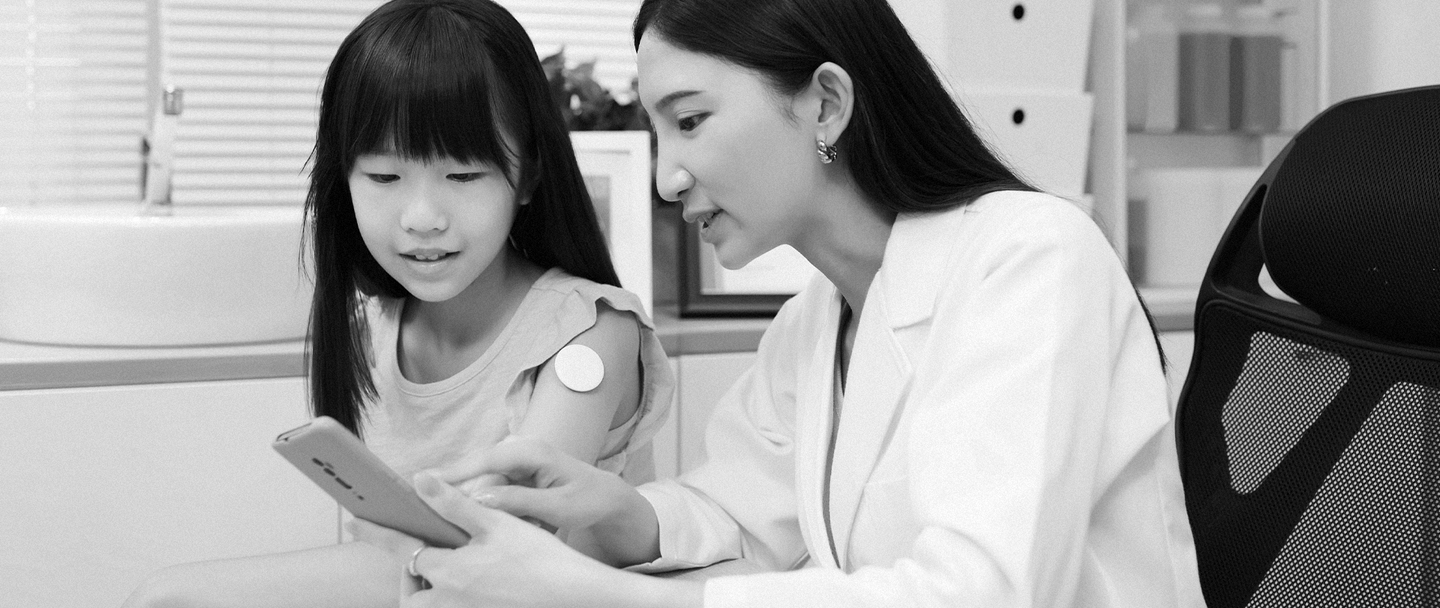For too many families, type 1 diabetes (T1D) only comes to light after an unexpected health crisis sends a child to the hospital. By the time symptoms appear, nearly 40% of US children are already in diabetic ketoacidosis, a life-threatening condition.1
To minimize the shock of diagnosis, clinicians and researchers have been working to identify at risk children before symptoms appear, so that these children can be monitored and supported as early as possible.
That's where the story of T1D screening begins, not just with science, but with finding a way to help minimize the worry, stress, and legitimate concern for the approximately 350,000 families worldwide who are affected with T1D every year.
From early research to lasting readiness
More than 20 years ago, we had a bold vision for implementing Population Screening for early detection of T1D, as researchers and clinicians asked for better tools to understand the disease. In response, our scientists developed autoantibody assays for biomarkers like GAD65 and IA2, alongside insulin autoantibodies and HLA genotyping. At that time, the science was ahead of practice and the world wasn't ready for large-scale implementation. There were no therapies to offer families once risk was identified, so widespread screening wasn't appropriate. But instead of stepping back, we stayed close, refining technologies, supporting researchers, and strengthening the foundation for the day when screening for T1D would make a difference.
Turning scientific readiness into clinical readiness
We believe that day has come. With the arrival of FDA-approved disease-modifying therapies, that have the potential to delay T1D onset by two years, early detection could make a real impact. Additionally, research has identified optimal ages for screening, when risk could be detected before symptoms appear, while healthcare systems are beginning to embrace prevention as a way to improve patient outcomes and reduce long-term physical and financial costs.
But readiness isn't only about assays and instruments, it's about collaboration and trust. With decades of leadership in screening technology, our instruments, assays and expertise are the trusted standard in public health labs across more than 100 countries, supporting the screening of over 730 million newborns worldwide. Together with clinicians, researchers, and health systems, we are building on that foundation to bring T1D screening into practice. For families, this readiness may mean avoiding emergency hospitalization upon disease onset, and potentially a chance to access emerging therapies sooner.
Teamwork that makes progress possible
Momentum is growing.
- In Italy, T1D screening for children became law in 2023, and has a mandate to be implemented across the country.
- In Finland, FINT1DAS study started to screen children in Turku and Oulu regions at ages 2 and 6 using dried blood spot (DBS) samples, laying the foundation for wider rollout. Similar studies are being implemented across Europe.
- Across the world, we are working with pharma, academia and public health systems united by a shared vision: identify risk early, intervene sooner, improve lives.
By enabling autoantibody testing directly from DBS samples, collected through a simple finger prick, laboratories can do first line screening and retest from the same sample to confirm whether a confirmatory serum sample is needed. This approach could reduce burden on families while streamlining healthcare workflows, making T1D screening scalable, cost-effective, and accessible.
Looking ahead
Just as newborn screening once transformed global public health decades ago, moving T1D screening into standard practice has the power to change lives on a massive scale. We recently announced a collaboration with Sanofi to revolutionize the early detection of Type 1 diabetes. This initiative spans IVD assay development and a new Revvity Omics lab-developed test, expanding clinical testing for early-stage disease screening and further accelerating our shared mission to bring prevention into practice.
It will take persistence, advocacy, education and global collaboration. Fortunately, that foundation is already largely in place. At Revvity we're not just providing tools, we're working alongside scientists, clinicians, and organizations worldwide to reimagine what's possible in prevention and care.
Every child deserves the chance to grow up with fewer barriers and more possibilities. When it comes to making that future real, we are not just ready. We've been ready.
Challenge accepted.
Revvity Omics testing service has not been cleared or approved by the U.S. Food and Drug Administration. Testing services may not be licensed in accordance with the laws in all countries. The availability of specific test offerings is dependent upon laboratory location.
The content on this page is provided for informational purposes only, and is not intended as medical advice. It is not intended to substitute consultation, diagnosis, and/or treatment provided by a qualified licensed physician or other medical professional.
References
- https://pmc.ncbi.nlm.nih.gov/articles/PMC7835920/TRIGR - PMC

































